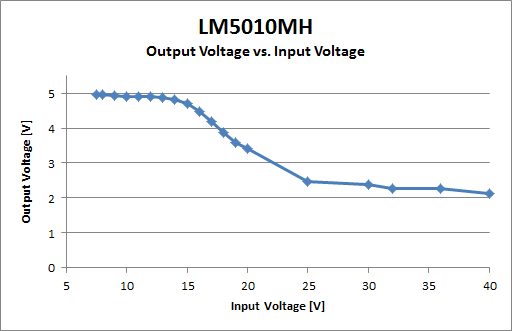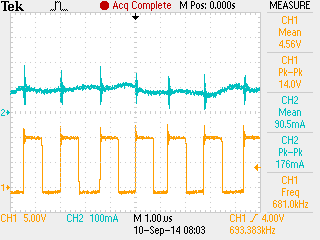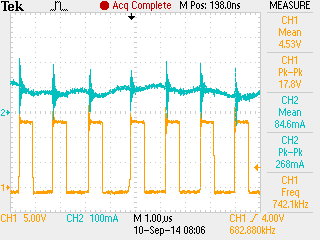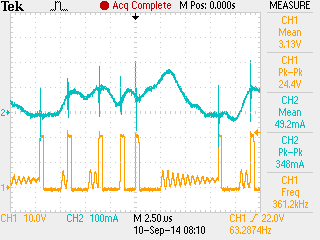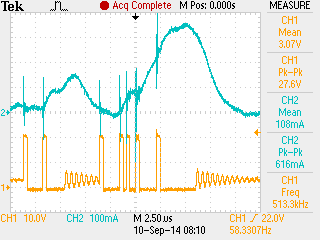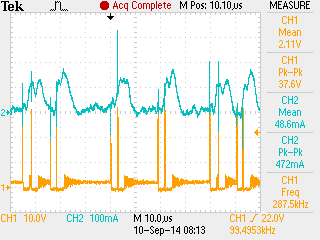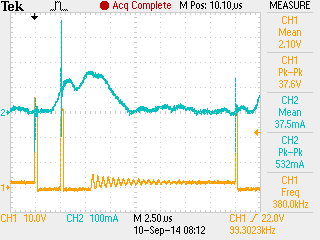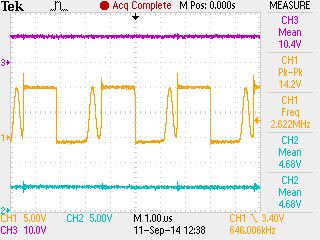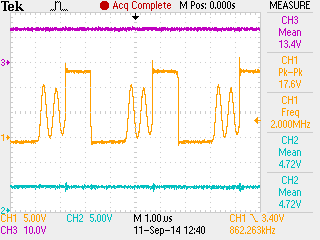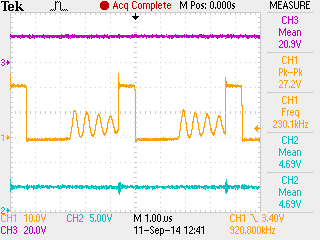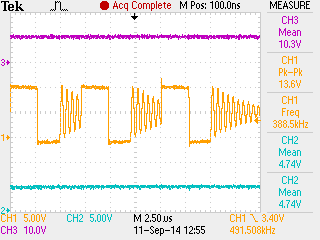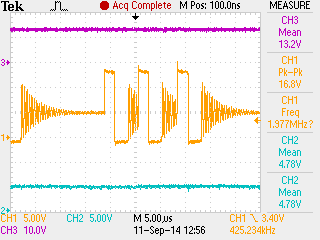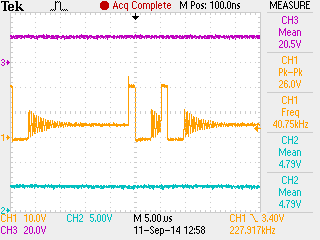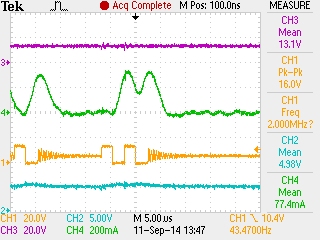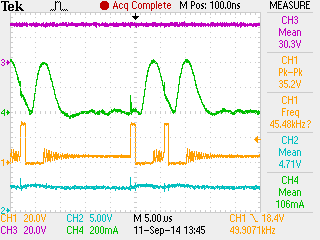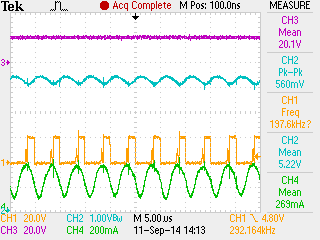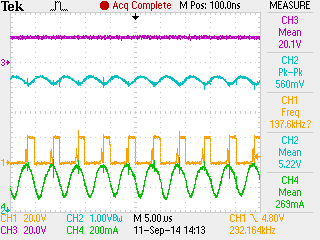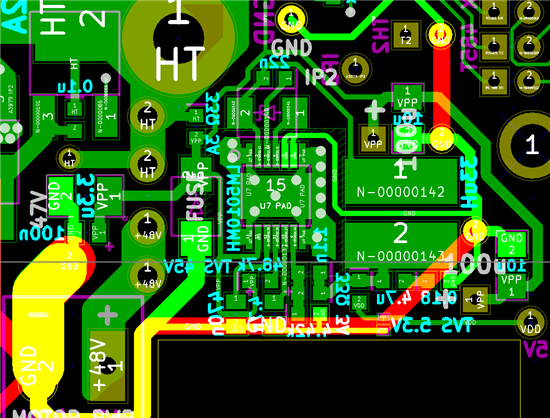Hi, I'm trying to use the LM5010MH to convert input voltages in the 10V to 48V range down to 5V.
The design works fine for low voltages but the output drops to an unusable level above 15V. Here is a graph with more data points:
Here is the schematic for my circuit:
The inductor symbols labeled "33ohm 3A" are SMT ferrite beads.
I've also attached the Webench design that the implementation above was based on. I tried to use the exact parts listed in the Webench bill of material.
I would like to increase the range of input voltages to the LM5010 that will give me 5V on the LM5010 output. Any thoughts or ideas for troubleshooting?
Thanks!
- Chris


